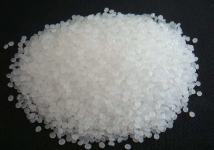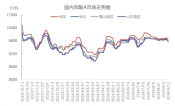read: 1254 time:2025-03-20 05:23:19 from:化易天下
Phenolic material, also known as phenolic resin or phenolic plastic, is a synthetic polymer derived from phenol and formaldehyde through a condensation reaction. This material has become a cornerstone in various industrial applications due to its remarkable thermal stability, mechanical strength, and resistance to chemicals. In this article, we will explore the properties, types, and common uses of phenolic materials to provide a clear understanding of what phenolic material is and why it is so widely utilized.
Phenolic material is known for its exceptional thermal stability and fire-resistant properties, making it a preferred choice in high-temperature applications. It can withstand temperatures up to 150°C (302°F) without significant degradation. Additionally, phenolic materials exhibit high mechanical strength and dimensional stability, which means they maintain their form under stress and over time. Their resistance to a wide range of chemicals, including acids and bases, further enhances their durability in harsh environments.
There are various types of phenolic materials, each tailored for specific applications. The two most common forms are novolac and resol phenolic resins. Novolac phenolic resins require an external cross-linking agent, such as hexamethylenetetramine (HMTA), to cure, whereas resol phenolic resins are self-curing. This distinction is crucial because it influences the material's processing conditions and final properties. Novolac resins are typically used in molding applications, while resol resins are favored for laminates and coatings.
Understanding what phenolic material is also involves recognizing its wide range of applications. Due to its robustness, phenolic material is extensively used in electrical insulation, automotive parts, and as adhesives in the wood industry. In electrical applications, phenolic resins are used to make circuit boards, switches, and other components that require high heat resistance and electrical insulation. The automotive industry uses phenolic materials in brake pads, clutch plates, and various under-the-hood components because of their ability to withstand high temperatures and mechanical stress. Moreover, in the wood industry, phenolic resins serve as adhesives for plywood and particleboard, contributing to the structural integrity of these products.
While phenolic material offers numerous advantages, it is essential to consider its limitations. The material's brittleness can be a drawback in applications where flexibility is required. Additionally, phenolic materials tend to be more expensive than other plastics, which may limit their use in cost-sensitive applications. However, the benefits of using phenolic materials, such as their superior thermal and chemical resistance, often outweigh these drawbacks, especially in demanding industrial environments.
In summary, what is phenolic material? It is a versatile, high-performance polymer known for its thermal stability, mechanical strength, and resistance to chemicals. With applications ranging from electrical insulation to automotive components and wood adhesives, phenolic materials are indispensable in many industries. Understanding its properties and applications helps highlight why phenolic materials continue to be a material of choice in demanding environments.
Prev: what is phenolic insulation
Next: what is phenolic plastic

Jincheng Petrochemical's 300000 ton polypropylene plant successfully trial production, 2024 polypropylene market analysis

The ABS market remains sluggish, what is the future direction?

Market differentiation of bisphenol A intensifies: prices rise in East China, while prices generally decline in other regions

The production method and process flow of silicone acrylic lotion, and what are the common raw materials